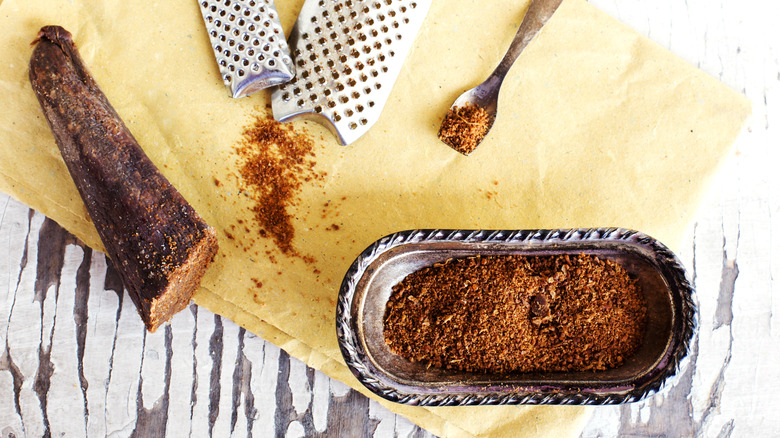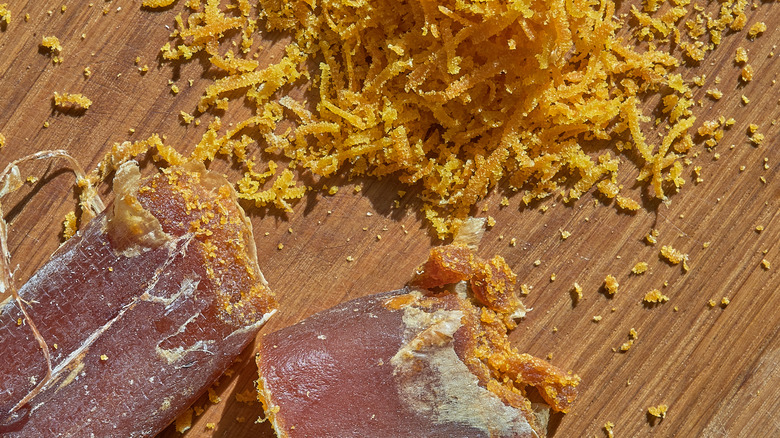Why Bottarga From Tuna Stands A Cut Above The Rest
Called the "poor man's caviar" and the "prosciutto of the sea," bottarga, or salted, pressed, and dried fish roe, is an ancient delicacy that is becoming increasingly popular in recent times. Enjoy it sliced thin on bread, and drizzled with olive oil or lemon juice, or grated over pasta, salad, and toast. Nutritious, and high in protein and vitamins A, B1, C, E, and K, bottarga is made using an ancient curing technique, where entire sacs of roe are removed whole from fish, washed and cleaned, then packed in sea salt, pressed, and air dried — anywhere from a few days to a few months.
With its likely roots around the Mediterranean (via Serious Eats), bottarga has long been popular in countries like Italy, Greece, and Turkey, though it has spread elsewhere over time. Outside of the Mediterranean, bottarga can be found in Norway, where it is made from North Atlantic cod, and Asian countries like China, Japan, and Korea, where it is usually made from croaker, freshwater drum, and mullet, explains Masterclass. Per Caviar Star, bottarga can also come from flounder, halibut, herring, seabass, shad, and weakfish, or really any fish that produces small eggs in a durable membrane. Out of all the different fishes that produce bottarga, there's one kind that's a cut above the rest.
Tuna bottarga stands apart for its size, taste, and availability
Made from the roe of the grey mullet, Sardinian bottarga, or bottarga di muggine, is one of the most famous types of bottarga globally. Bottarga di tonno, or tuna bottarga, is bottarga made from tuna, popular in Sicily. And while any type of tuna can be used, bluefin and yellowfin tuna tend to be the most popular in Sicily, while bonito is used in Spain. Tuna yield bottargas that are large, long, skinny, and firm, with a stronger flavor when compared to other bottarga varieties, which Caviar Star describes as "an intense tuna fish flavor and a strong brininess of the deep ocean."
As Serious Eats explains, tuna bottarga is a lot more difficult to find. As a result, it's often a lot pricier. As with all bottarga, and perhaps even more so with its "aggressive dried fish flavors" and "definite mineral edge," a little tuna bottarga goes a very long way. Bottarga also stays good for months — assuming it even last that long, with the many delightful ways you can enjoy this ancient savory and umami treat.

